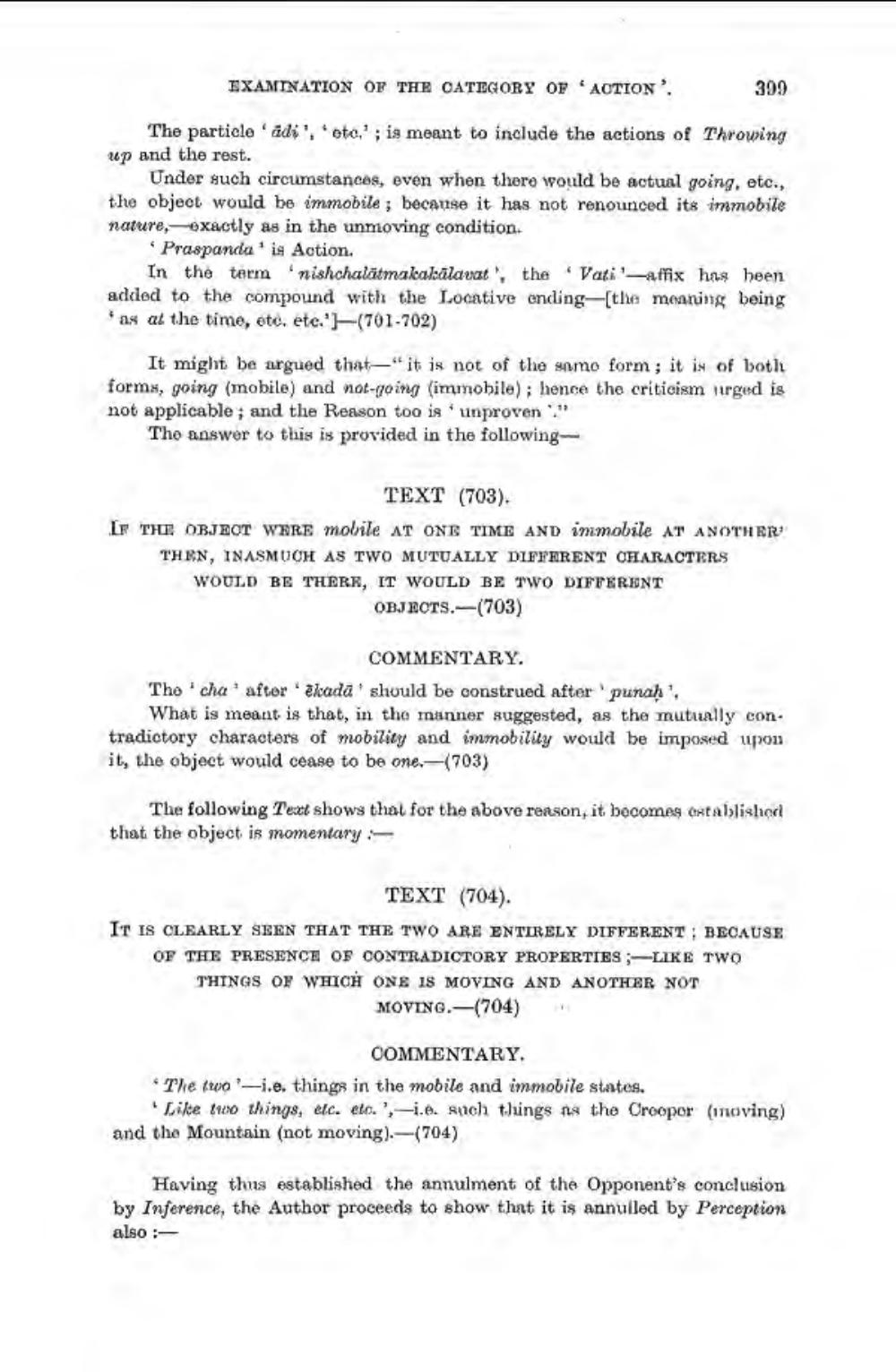________________
EXAMINATION OF THE CATEGORY OF
ACTION'.
309
The particle 'adi, eto,'; is meant to include the actions of Throwing up and the rest.
Under such circumstances, even when there would be actual going, etc., the object would be immobile ; because it has not renounced its immobile nature.-exactly as in the unmoving condition.
Praspanda' is Action.
In the term 'nishchalātmakakālavat, the Vati'-affix has been added to the compound with the Locative ending the meaning being * as at the time, etc, ete.' (701-702)
It might be argued that it is not of the samo form; it is of both forms, going (mobile) and not going (immobile); hence the criticism irged is not applicable; and the Reason too is unproven'."
The answer to this is provided in the following
TEXT (703). LF THE OBJECT WERE mobile AT ONE TIME AND immobile AT ANOTHER
THEN, INASMUCH AS TWO MUTUALLY DIFFERENT CHARACTERS WOULD BE THERR, IT WOULD BE TWO DIFFERENT
OBJROTS.-(703)
COMMENTARY. Tho cha' after Skada should be construed after punah,
What is meant is that, in the manner suggested, as the mutually con. tradictory characters of mobility and immobility would be imposed upon it, the object would cease to be one.—(703)
The following Text shows that for the above reason, it becomes crtablished that the object is momentary S
TEXT (704). IT IS CLEARLY SEEN THAT THE TWO ARE ENTIRELY DIFFERENT : BECAUSE OF THE PRESENCE OF CONTRADICTORY PROPERTIES ;-LIKE TWO THINGS OF WHICH ONE IS MOVING AND ANOTHER NOT
MOVING.—(704)
COMMENTARY. The two-i.e. things in the mobile and immobile statos.
Like two things, etc. elo',-.e. such things as the Croopor (moving) and the Mountain (not moving).-(704)
Having thus established the annulment of the Opponent's conclusion by Inference, the Author proceeds to show that it is annulled by Perception alsos




